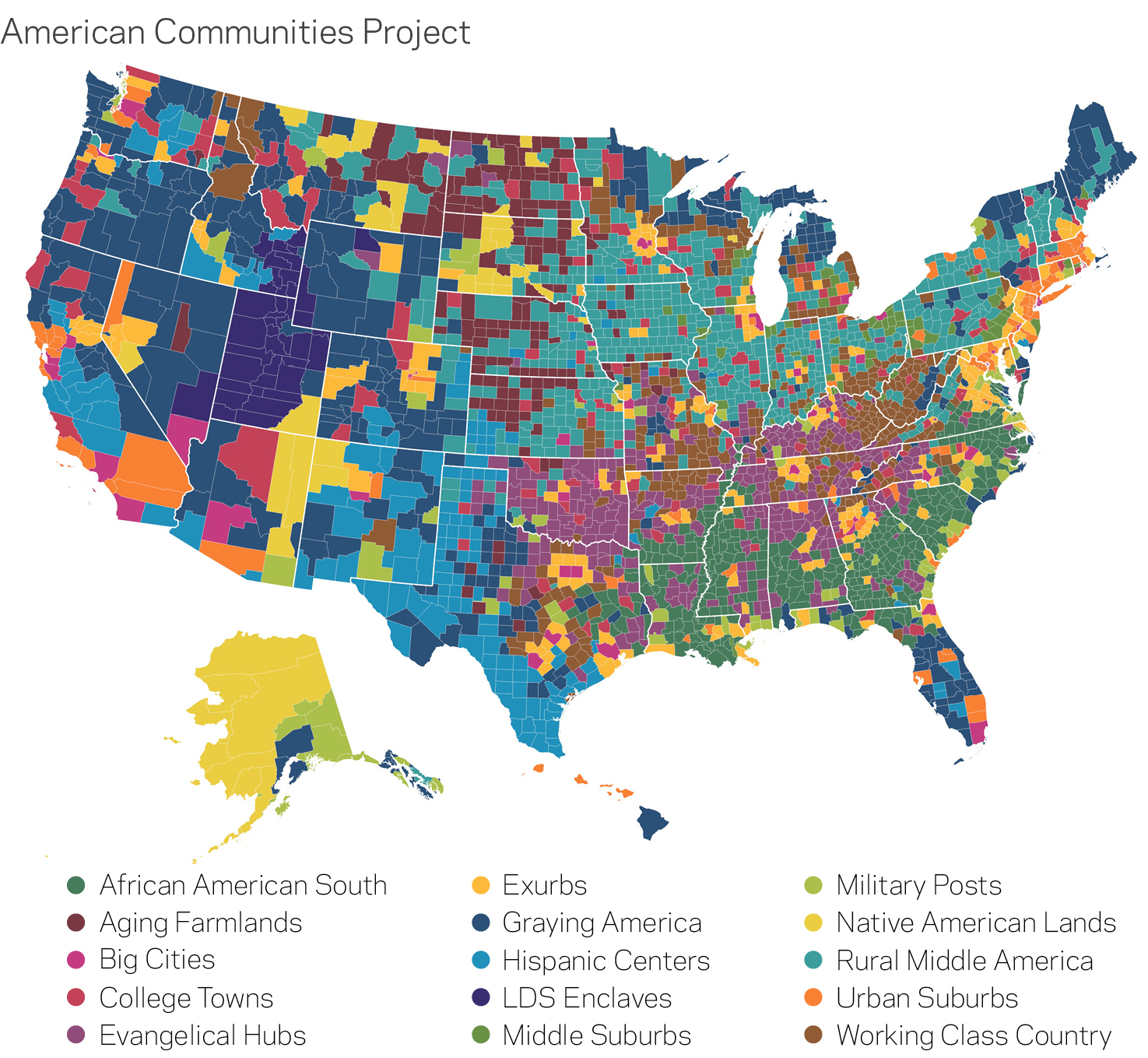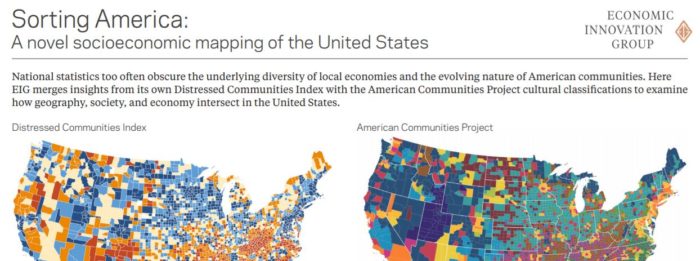National statistics too often obscure the underlying diversity of local economies and the evolving nature of American communities. In this data snapshot, EIG merges insights from its own Distressed Communities Index with the American Communities Project’s county cultural classifications to examine how geography, society, and economy intersect in the United States.
Based at George Washington University’s School of Media and Public Affairs, the American Communities Project classifies counties into 15 types based on a range of social, demographic, and economic indicators ranging from population density to religious affiliation and membership in the military. EIG’s Distressed Communities Index, for its part, combines seven indicators of economic well-being into a single metric. It covers poverty, education, worklessness, vacancy, incomes, jobs, and businesses, and it groups counties into five quintiles ranging from prosperous to distressed based on their relative performance.
Together, the two complementary frameworks illuminate a wholly original socioeconomic map of the United States. Their crosswalk allows us to answer questions such as: How do communities with different demographic compositions stack up? Where does prosperity reign? Is all of rural America struggling?
Our key takeaways include:
- Minority-heavy counties are most likely to be economically distressed, pointing to serious structural inequalities.
- Yet whiter Working Class Country and Evangelical Hubs are no longer that far behind.
- The Exurbs dominate the map of American prosperity, but Big Cities and Urban Suburbs carry their weight and point to the increasingly metropolitan nature of prosperity.
- Extraordinarily, no Suburban or Exurban county in the United States falls into the bottom one-fifth in terms of economic well-being.
- Rural Middle America, stretching across the northern heartland, manages to sustain relatively high levels of well-being.
- College Towns and Military Posts exhibit surprisingly similar profiles.
- True to character, American communities—just like Americans themselves—often defy neat classification. Graying America, for example, captures depopulating rural areas, recreation hotspots, and retirement destinations, and its counties fall almost evenly across the five tiers of well-being.
Comparing EIG’s Distressed Communities Index with the American Communities Project county classifications

What strikes you?
Explore the Maps








